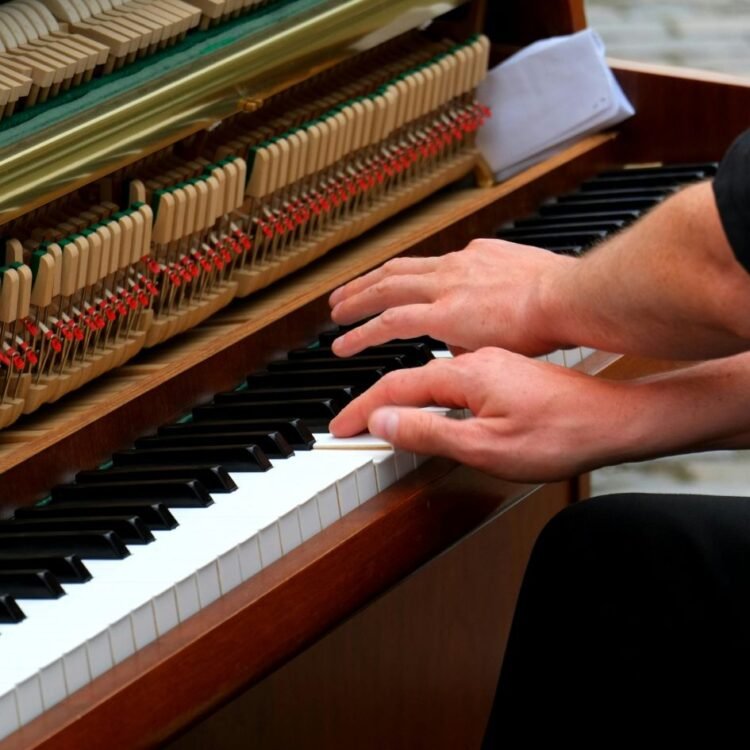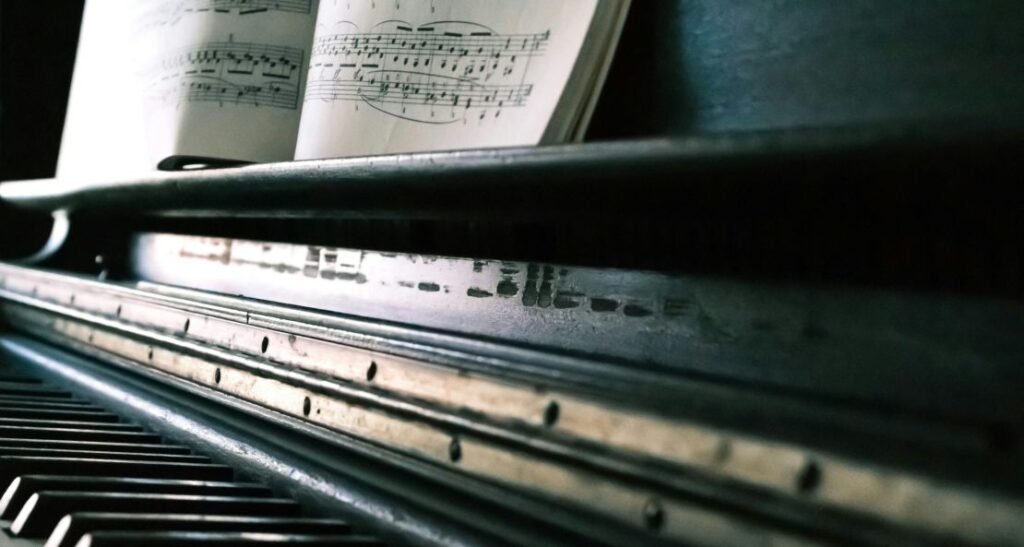Piano chords form the backbone of most music compositions, providing the harmonic structure that supports melodies.
A chord is created when multiple notes are played simultaneously, and in piano music, chords are essential for creating rich, full soundscapes.
Whether you’re playing classical, jazz, or pop, understanding how to build and use piano chords is crucial for any pianist.
Understanding Piano Chords

A piano chord is a group of notes played simultaneously, creating harmony and enriching the music.
At its most basic, a chord consists of at least three notes, often called a “triad.”
These notes are built on intervals, typically a root note, a third, and a fifth.
For example, in a C major chord, the notes are C (root), E (major third), and G (perfect fifth).
There are different types of chords, each adding distinct flavours to the music:
- Major Chords: Typically associated with a happy or bright sound (e.g., C major: C-E-G).
- Minor Chords: Often evoke a sad or melancholic tone (e.g., A minor: A-C-E).
- Diminished and Augmented Chords: Used for tension or dramatic effect.
- Seventh Chords: Adding a fourth note to a triad (e.g., C7: C-E-G-Bb) gives it a jazzier, richer sound.
Understanding these basic piano chord structures and how they relate to each other is crucial for progressing in piano playing and music theory.
How Chord Progressions Shape Music
Chord progressions are the backbone of most musical compositions, providing the harmonic framework that supports melodies.
In piano music, chord progressions are sequences of chords that create a sense of movement, tension, and resolution.
The way chords transition from one to another evokes different emotions and helps guide the listener through the musical journey.
For instance, an I-IV-V progression (like C-F-G in C major) creates a feeling of resolution, as the tonic (I) serves as the starting and ending point, while the dominant (V) builds tension before returning to the tonic.
Meanwhile, a vi-IV-I-V progression, often used in pop music, creates a more emotional or uplifting tone.
Chord progressions shape music by establishing a mood, creating harmonic tension, and giving a sense of closure.
Their role in defining genres is also significant—jazz, classical, pop, and blues all rely on distinct progressions to set their musical identity.
How to Practice Piano Chords

Practicing piano chords effectively requires a mix of understanding theory and building muscle memory through consistent practice.
Here’s a guide on how to practice piano chords:
- Start by practicing major and minor chords in root position.
- Work on playing inversions of each chord (first and second inversions).
- Practice common chord progressions like I-IV-V and I-V-vi-IV.
- Use a metronome to practice chord transitions, starting slow and increasing speed.
- Experiment with different rhythms while playing chords.
- Practice chords with both hands, incorporating simple melodies or arpeggios.
- Explore seventh and extended chords for more depth in your playing.
- Apply your chord knowledge by playing real songs and analysing their chord structures.
- Practice consistently to build muscle memory and improve fluidity.
Examples of Famous Chord Progressions in Piano Music
Examples of Famous Chord Progressions in Piano Music
Many iconic piano pieces rely on well-known chord progressions, each contributing to the overall feel of the music. Here are a few notable examples:
- Pachelbel’s Canon in D (I-V-vi-iii-IV-I-IV-V)
This is one of the most famous classical chord progressions. It starts in D major (I) and moves through a cycle of chords that create a harmonic flow, used often in pop songs like Green Day’s “Basket Case.”
- Beethoven’s “Moonlight Sonata” (i-iv-VI-V7)
This progression in the first movement of Beethoven’s Moonlight Sonata shifts between minor and major chords, creating a hauntingly beautiful mood.
- Adele’s “Someone Like You” (I-V-vi-IV)
A popular chord progression in modern pop music, this progression is also known as the “four-chord song” structure, as it’s used in countless hits for its emotional impact.
- The 12-bar blues progression (I-IV-V)
Used widely in jazz and blues music, this simple but powerful progression forms the foundation for countless songs, from traditional blues to rock ‘n’ roll.
These examples show how chord progressions not only define the character of a piece but also influence entire musical genres.
By learning and mastering these progressions, pianists can unlock the creative potential to compose and perform a wide variety of music.
Crafting Your Own Chord Progressions: Unlocking Creative Potential

Creating your own chord progressions is an exciting way to personalise your music and explore new harmonic possibilities.
By experimenting with different sequences of chords, you can shape the emotional landscape of a piece—whether it’s uplifting, melancholic, or suspenseful.
Start by understanding basic progressions like the I-IV-V (e.g., C-F-G) or more complex structures like the ii-V-I used in jazz, and then experiment by substituting or adding chords to create unique transitions.
The creative potential of chord progressions lies in their flexibility; you can modulate to different keys, switch between major and minor chords, or introduce unexpected elements like diminished or augmented chords to add tension and intrigue.
This experimentation is the foundation of songwriting and composition, allowing musicians to evoke specific moods and tell a story through harmony.
By mastering the basics and pushing boundaries, you open endless possibilities for musical expression.
Conclusion
Piano chords are the building blocks of musical composition, shaping the harmonic foundation and emotional tone of a piece. Whether through classical, jazz, or pop music, understanding how chords work together in progressions allows musicians to convey complex emotions and create memorable melodies. The ability to craft your own chord progressions opens the door to endless creativity, allowing for unique expressions of mood and style. By mastering chord theory and experimentation, musicians can truly bring their compositions to life.
As the great Leonard Bernstein once said, “Music can name the unnameable and communicate the unknowable.” Through the artful use of chords, piano players can indeed communicate emotions that words alone cannot express.


